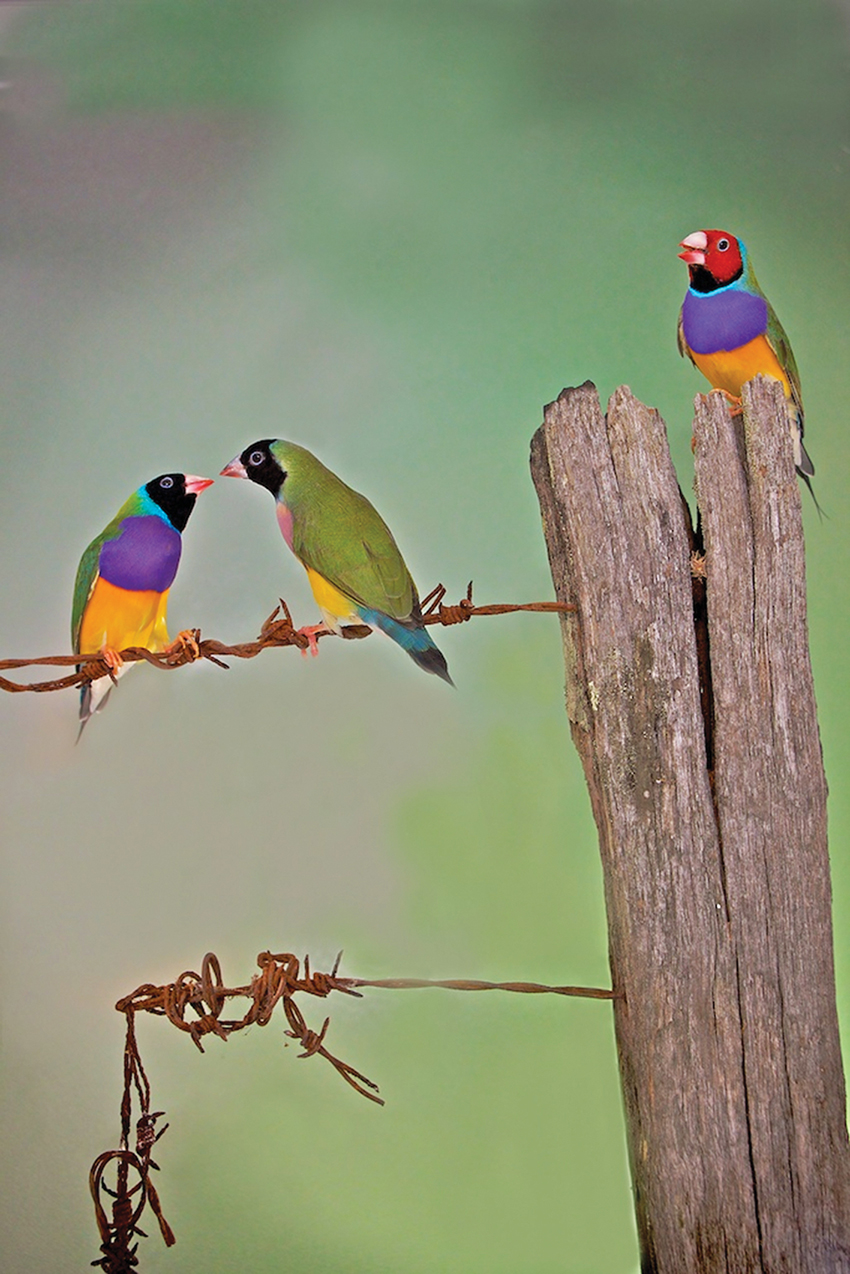
Assortative
mating in the Gouldian Finch (Erythrura
gouldiae)
Gouldian Finches occur in two
color morphs, black- or red-headed, in both sexes. Recall
that in avian sex determination, females are
heterogametic (ZW) and males homogametic (ZZ).
Head color is determined by a single locus on the Z
chromosome, with ZR dominant
to Zb.
Both sexes prefer mates with the same head
color. As shown here, black-headed females ( ZbW
) [center]
are preferentially attracted to black-headed males (ZbZb
) [left],
rather than red-headed males ( ZRZR or
ZRZb
)
[right]. All offspring (male and female) of such
crosses are necessarily black-headed ( ZbZb
males, or ZbW
females).
Similarly, all offspring of red-headed females ( ZRW
) who choose homozygous red-headed males ( ZRZR )
will be red-headed. However, it they choose heterozygous
red-headed males ( ZRZb ),
all of the male offspring will be red-headed ( ZRZR or
ZRZb
), whereas half of the female offspring will be
black-headed ( ZbW
vs ZRW
).
Such assortative mating schemes
may lead to runaway sexual
selection: female choice and male phenotype
drive each other in the same direction, and the divergence
of the phenotypes evolves rapidly.
Draw a Punnett Square of the genetic crosses described here.